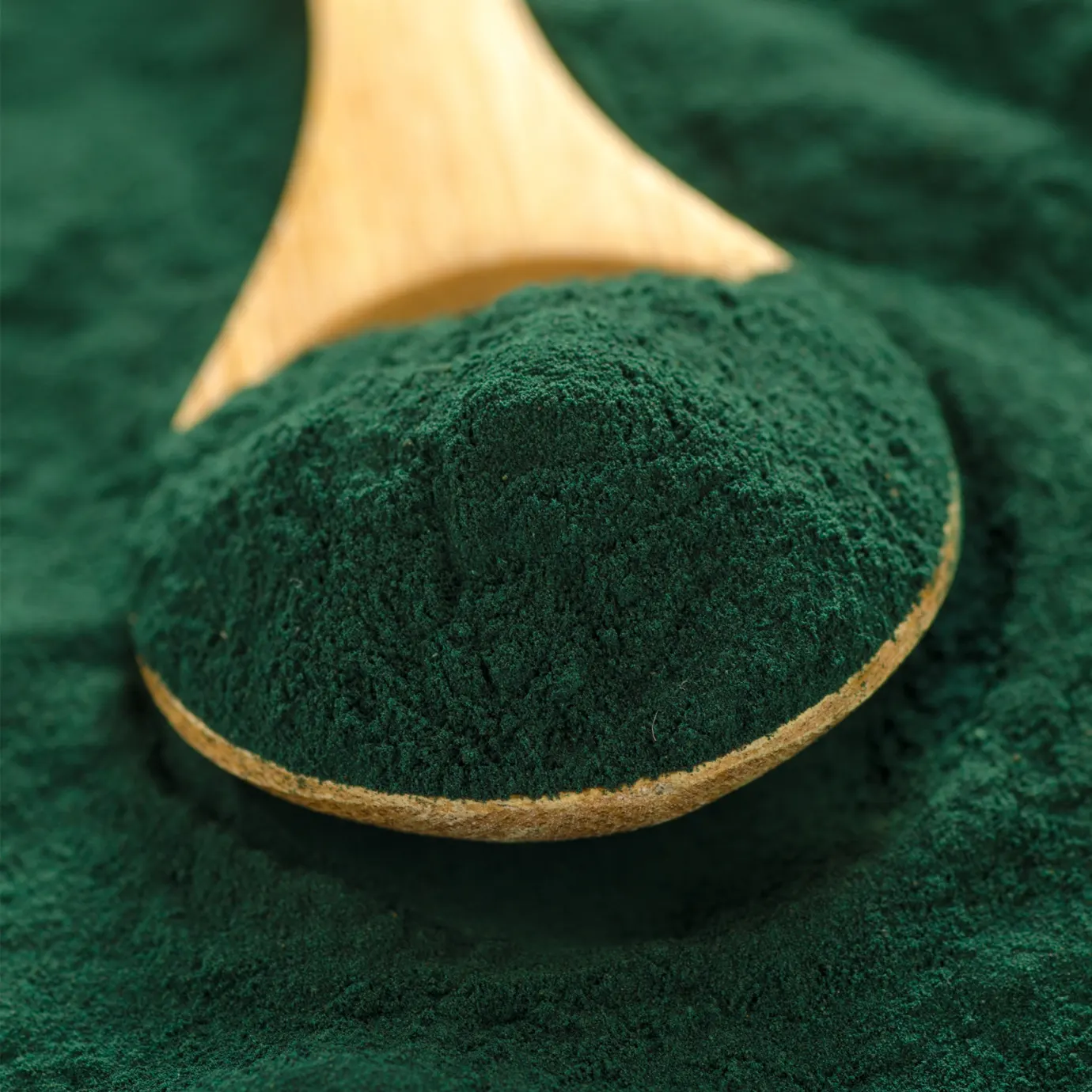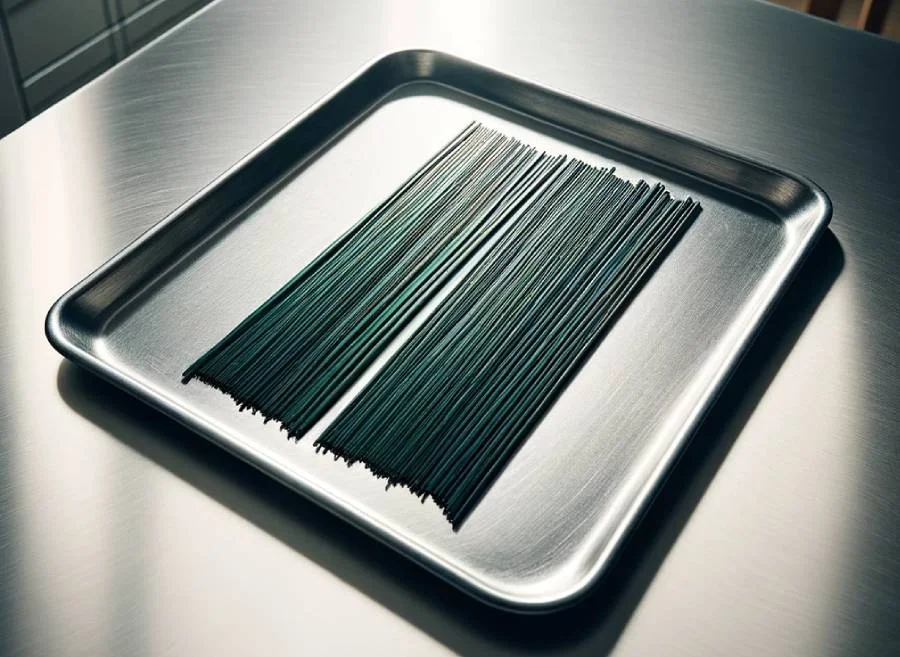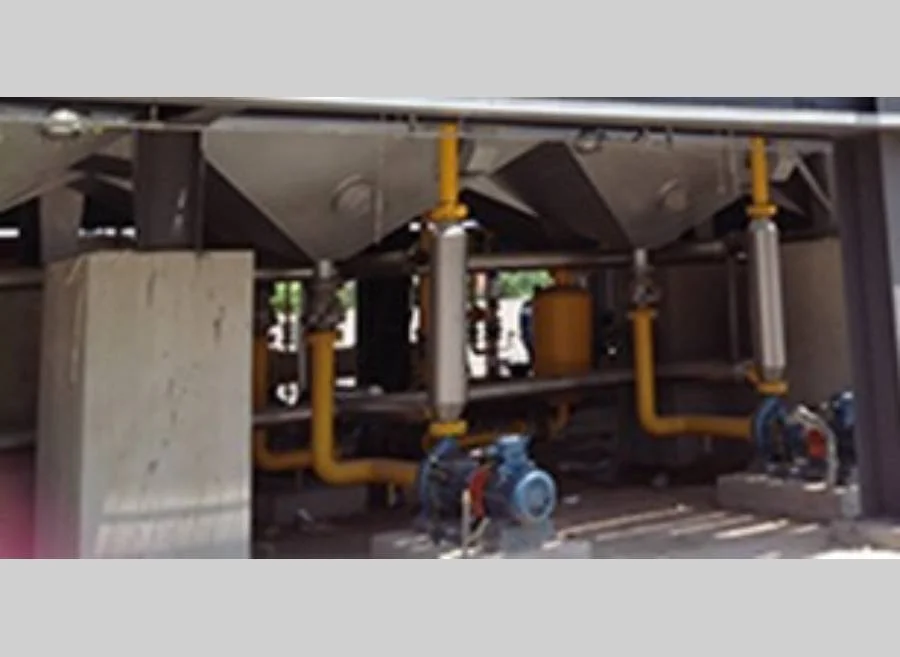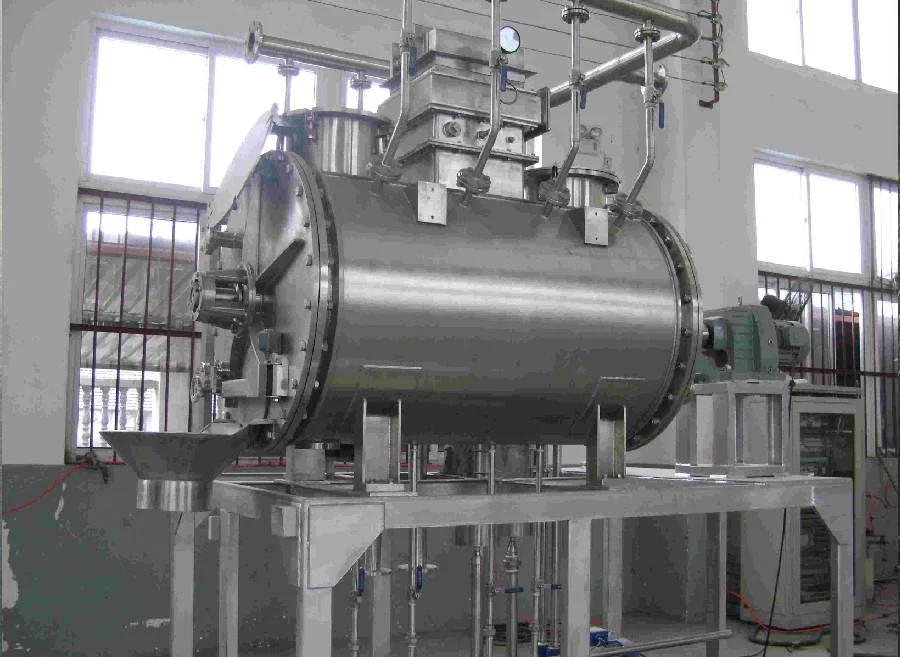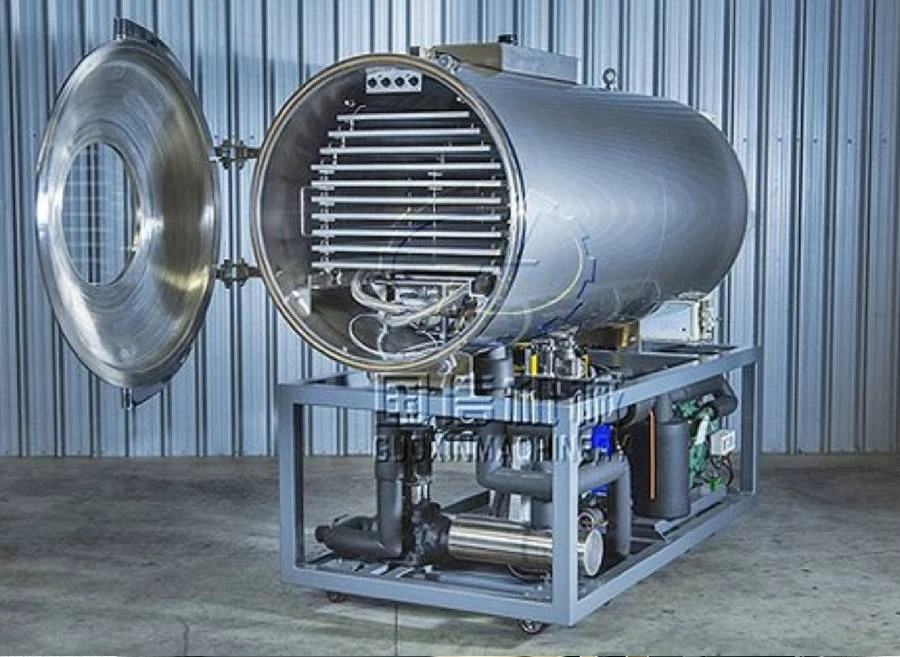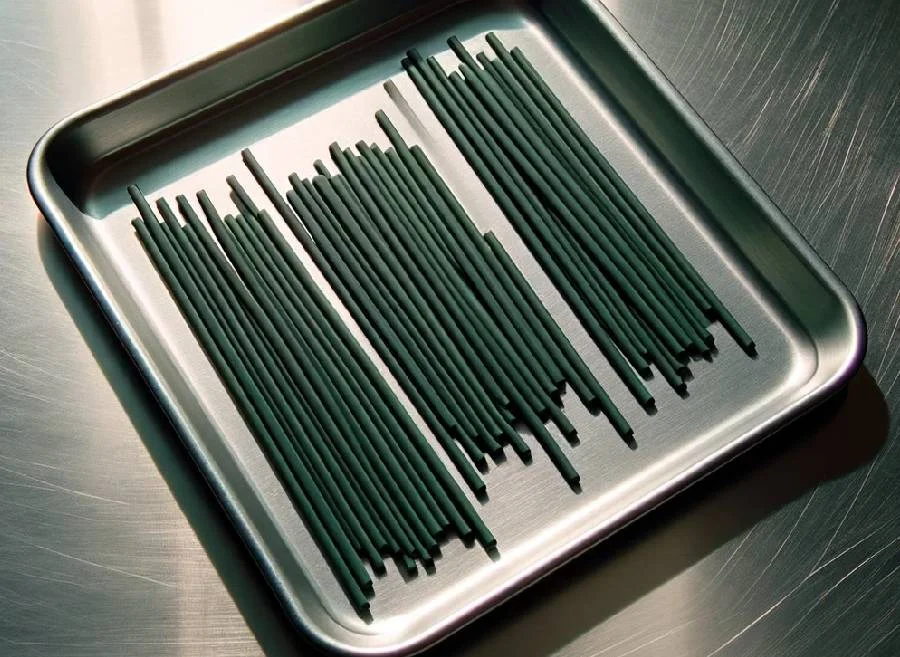Precision Drying with Vacuum Technology for Spirulina Perfection
Drying spirulina at low temperatures is essential to protect its nutritional richness—especially temperature-sensitive compounds like phycocyanin. Our vacuum dryer system operates on reduced vapor pressure principles, enabling water to evaporate at significantly lower temperatures (40–50°C) without compromising on drying speed. This ensures gentle yet highly efficient moisture removal, making it ideal for high-grade organic spirulina production.
Whether you’re drying flakes, noodles, or crunchies, our system provides flexibility in output forms, alongside complete automation for seamless operation. With each drying cycle completed in just minutes, it significantly boosts productivity while maintaining product consistency.
Reliable Low-Temperature Drying System for Organic Spirulina
Why Vacuum Drying Works Best for Spirulina
Vacuum drying is particularly effective for spirulina, a biomass rich in bioactive compounds. Conventional methods like drum or spray drying often degrade heat-sensitive elements. Our vacuum drying system solves this by operating under low-pressure environments, where boiling points are reduced, allowing drying to occur without applying excessive heat.
This method is crucial for maintaining spirulina’s protein content, vitamins, and natural pigments like chlorophyll and phycocyanin—components vital for both human nutrition and animal feed markets.
Features That Redefine Spirulina Drying
-
Low Operating Temperatures (40–50°C): Prevent nutrient degradation.
-
Versatile Output: Flakes, noodles, or custom forms supported.
-
Fully Automated Cycles: Load once, and the system takes care of the rest.
-
Energy-Efficient: Uses minimal electricity compared to conventional dryers.
-
Hygienic Design: Optional CIP (Clean-in-Place) system ensures easy cleaning and GMP compliance.
-
Labor-Efficient: One unskilled operator can manage the process.
Our tray-based vacuum dryer ensures fast drying, a uniform moisture profile, and easy discharge, ready for packaging or further processing like spray drying or grinding.
Vacuum Drying, Reinvented for Spirulina
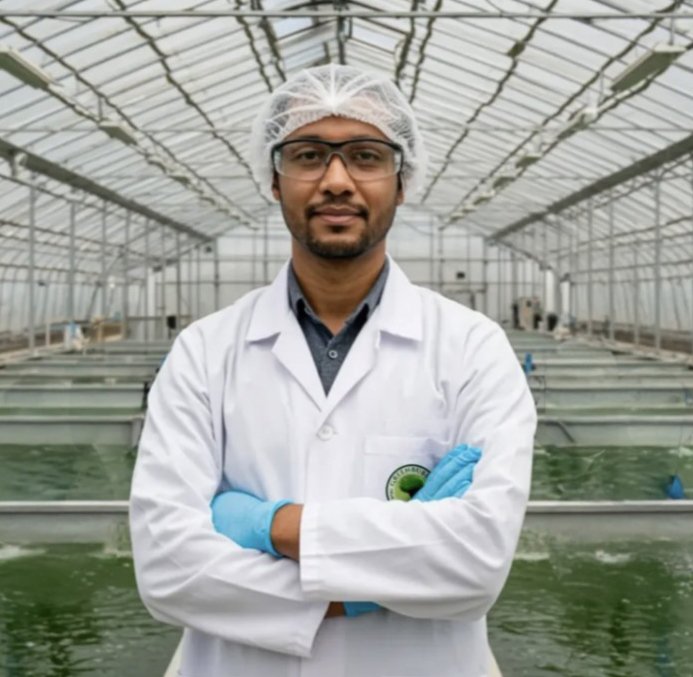
Gentle Nutrient-Preserving Drying
Low-temperature drying protects vital nutrients like phycocyanin and proteins.
Supports Multiple Spirulina Forms
Easily dries flakes, noodles, granules, and other spirulina formats.
Automated for Labor Savings
Fully automatic system minimizes manual work and boosts efficiency.
Low Temperature, High Efficiency
Fast drying at 40–50°C with reduced energy use.
Hygienic and GMP Compliant
CIP-ready design meets top hygiene and certification standards.
Flexible Batch Size Configurations
Available in sizes for small to large-scale operations.
At Greenbubble, we understand that drying is not just a post-harvest process—it’s a critical quality control step. Our vacuum dryer was designed keeping the organic spirulina farmer in mind. Whether you’re scaling up or focusing on premium-grade nutraceutical products, this dryer enables you to maintain nutrient density and market-ready quality at every stage.
Unlike conventional drying techniques, which demand high temperatures or extensive manual oversight, our vacuum drying system automates everything from moisture detection to tray control. This means minimal intervention, reduced human error, and better consistency across batches.
For organic-certified operations, this solution also helps meet compliance benchmarks. Its hygienic design, ease of maintenance, and uniform drying profile all contribute to meeting GMP, USDA Organic, and HACCP standards. From lab testing to export readiness, your dried spirulina stays aligned with the strictest quality protocols.
The system is also built to be flexible. Whether you’re dealing with small-scale specialty production or high-volume commercial output, we provide vacuum dryers in different sizes to suit your specific needs—without sacrificing performance.
Investing in this system means investing in your brand’s reliability. When your product delivers on both nutritional value and quality assurance, you’re not just drying spirulina—you’re building long-term trust with your buyers.
Ready to take the next step?
Let’s elevate your spirulina harvest—batch by batch, with unmatched precision.
Spirulina Farming FAQs
Everything You Need to Know About Commercial Spirulina Farming – From Setup to Profitability!
Following parameters need to be met while selecting land to set up a plant.
- low cyclone area
- flat land
- road approach
- less rainfall
- no hills or mountain shadow
- high temperature and dry land
- Mild or higher temperatures in winters
- water source (preferably ground water)
- Spirulina usually grows in hot & extremophile conditions and can sustain very high temperatures
Both Central & State Governments have multiple schemes and subsidies depending on the zone or region where the project will be built. These schemes are available with capital subsidy incentive, interest subsidy incentive and as financing schemes – subject to availability based on the applicant’s profile, state & Region.
Yes, the demand for spirulina in India is rising due to its superfood status and benefits like high protein (60%+), antioxidants, balanced amino acid profile and essential vitamins. The nutraceutical, pigment industries and cosmetic industries drive the bulk demand, with additional interest from the animal feed, aquaculture sectors and bio fertilizers. Health-conscious consumers are increasingly seeking organic spirulina, making certified farms more competitive. However, export markets (EU, USA) offer higher profit margins and volumes because of higher consumption and awareness in their respective countries.
Spirulina quality is assessed in laboratories for key parameters like protein content (≥60%), phycocyanin levels (≥15%), heavy metals (lead, mercury, arsenic), microbial contamination, and purity. The Certificate of Analysis (COA) from third-party labs ensures compliance with global standards like USDA Organic, EU Organic, GMP, and HACCP. A simple at-home test includes checking colour (deep green-blue) and smell (fresh, non-fishy). For commercial-grade quality assurance, regular lab testing and batch tracking are essential.
Spirulina is relatively easy to cultivate under the right conditions, but maintaining high quality can be challenging. It thrives in high-pH, mineral-rich water with consistent agitation and ample sunlight. However, farms must closely monitor for contamination—such as heavy metals, harmful bacteria, and cross-contamination with other algae. Maintaining an optimal pH level (between 9 and 11) and using controlled drying methods are essential to preserve its nutritional value. Scaling up production requires automation of processes like filtration, harvesting, drying, and packaging, making commercial farming significantly more complex than small-scale setups.
Yes, India exports spirulina, but it requires strict regulatory compliance. To export, farms must obtain FSSAI, USDA Organic, and EU Organic certifications, ensuring compliance with global quality standards. Countries like the USA, EU, and Japan demand batch tracking, third-party lab testing (COA), and HACCP/GMP practices to verify purity. Organic-certified spirulina fetches higher prices, but maintaining consistent quality, low contamination levels, and proper documentation is crucial for global acceptance.
The ideal tank size for spirulina farming depends on production goals. Small-scale hobby farms can start with 1,000-5,000 litres (10-50 sq. m. tanks), while commercial farms require multiple tanks ranging from 4lakh to 8lakh litres for viability and to meet market demand. Tanks should be food-grade, contamination-free, and have an efficient agitation system to ensure even nutrient distribution. The depth should be around 20-30 cm, allowing optimal light penetration for photosynthesis. Regular pH, temperature, and contamination checks are crucial for consistent yields.
There are multiple Spirulina species, and the best one depends on the intended use. Arthrospira platensis is widely used due to its high protein content (60–70%), β-carotene, and phycocyanin levels. It is also GRAS-approved by the FDA, which makes it easier to market and sell. When choosing Spirulina, opt for organic-certified, lab-tested products with high phycocyanin content (≥15%) for the best health benefits. Low-quality, mass-produced Spirulina may contain toxins, heavy metals, or reduced nutrient levels. Therefore, selecting products that come with a valid Certificate of Analysis (COA) is essential.
Spirulina is expensive due to its high-quality control standards and nutrient-rich composition. Factors like pH balance, controlled agitation, organic compliance, and industrial nutrition preserving dryers increase production costs. Organic-certified spirulina requires third-party testing (HACCP, GMP, USDA Organic) for contaminants like heavy metals and bacteria, adding to expenses. Additionally, import restrictions and packaging for nutrient retention contribute to the high pricing. Despite the cost, its superior nutritional profile and increasing demand justify the premium.
Countries like the Japan, Thailand, and China lead in commercial spirulina production. France and Germany also produce premium-grade spirulina in small scales, often cultivated in controlled greenhouse environments. Indian spirulina has strong potential, but farms must focus on organic certification and contamination-free production to compete with global suppliers.
Yes, the demand for spirulina in India is rising due to its superfood status and benefits like high protein (60%+), antioxidants, balanced amino acid profile and essential vitamins. The nutraceutical, pigment industries and cosmetic industries drive the bulk demand, with additional interest from the animal feed, aquaculture sectors and bio fertilizers. Health-conscious consumers are increasingly seeking organic spirulina, making certified farms more competitive. However, export markets (EU, USA) offer higher profit margins and volumes because of higher consumption and awareness in their respective countries.
To start a spirulina farm, you need a warm climate (25-50°C), Fresh potable water and a contamination-free environment. Begin by setting up growth tanks (preferably food-grade material), an agitation system, and an organic nutrient supply. Ensure regular water testing, lab analysis for purity, and compliance with organic standards for targeting premium markets. Drying and packaging should use low-heat methods to retain nutrients. Marketing strategies should focus on B2B (nutraceuticals, pigment, cosmetics) and direct-to-consumer (powders, tablets, supplements). Hiring consultants can help you cover all bases and avoid costly mistakes during setup and operation.
The cost of starting a spirulina farm varies based on scale and automation level. A small-scale Hobby farm (1,000 sq. ft.) may cost around ₹5-10 lakh, while a commercial setup can exceed ₹1CR due to expenses like land preparation, building costs, Machineries, Raceway tanks construction, agitation systems, working capital, electrical and plumbing, lab setup many other management and administrative expenses. Key costs include Civil works, harvesting, drying system (Industrial nutrition preserving dryers), certification expenses (like FSSAI, USDA Organic, EUO, ECOCERT, HACCP, GMP) and working capital. While initial investment is high, proper planning, market positioning and quality assurance can yield significant returns.
Spirulina farming can be highly profitable, but success depends on factors like production scale, automation, organic certification, Quality and market demand. While some claim an ROI of 300% within months, realistic profitability takes 2-3 years due to high setup costs for infrastructure to reduce labour dependency, increased up time and meet the quality standards. Organic-certified spirulina fetches premium prices in domestic and international markets, making it a viable long-term investment. However, strict quality control, regulatory compliance, and a reliable distribution network are key to ensuring consistent profitability.
Related Services
Let us help you
